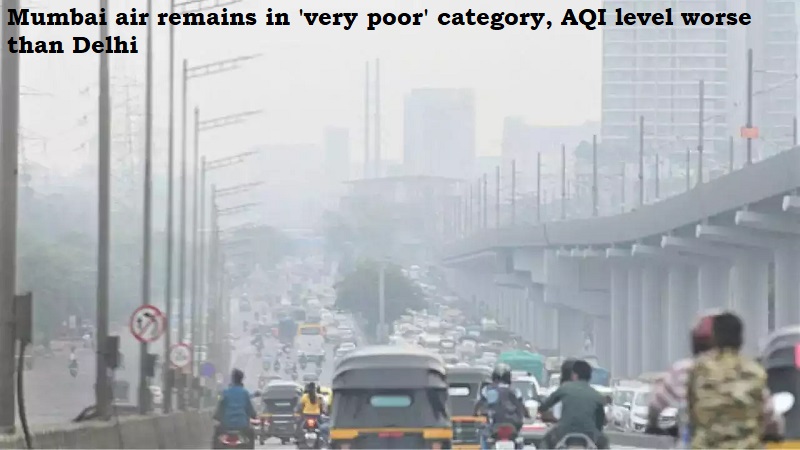
The air quality in Mumbai, India’s financial capital, has gotten worse than it was in Delhi, India’s national capital.
On Thursday, Mumbai’s Air Quality Index (AQI) of 316, which is regarded as ‘very poor,’ was higher than Delhi’s AQI of 263, which is regarded as ‘poor.’
An AQI between 201 and 300 is considered *poor*, 301-400 *very poor* and 401-500 *severe*, while an AQI between zero and 50 is considered *good*, 51 and 100 *satisfactory*, and 101 and 200 *moderate.
According to the System of Air Quality and Weather Forecasting and Research (SAFAR), haze is spreading around the city due to sluggish breezes, a drop in temperature, and suspended particles that mix with atmospheric moisture.
As Mumbai AQI became worse than Delhi’s, doctors advised people to take precautionary measures like wearing masks, especially those who have respiratory illnesses, while stepping out.
Mumbai’s civic body, BMC, has really developed an action plan to enhance air quality.
To address the increase in AQI levels, all 24 administrative wards have been instructed to implement prompt corrective actions. Cleaning up road debris, applying water, and locating air pollution hotspots and micro hotspots are all steps in the second stage.
In a special meeting with the civic board earlier this month, the consultants identified four wards where the AQI readings had increased and were now much above 200.
The most affected areas include Colaba-Churchgate, Mankhurd, Borivali, and Malad.

Post Your Comments